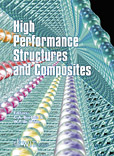Methodical Application Of Liquid Composite Molding Simulation
Price
Free (open access)
Transaction
Volume
59
Pages
12
Published
2002
Size
759 kb
Paper DOI
10.2495/HPS020541
Copyright
WIT Press
Author(s)
U. Huber, M. Maier
Abstract
To meet the requirements of short development cycles, there is a need for simulation to support the process development. Over the years many simulation tools for the RTM-process and its variations have been developed, but up to now there’s only little support for the users of this software concerning its methodical application. In the presented paper the use of liquid composite molding simulation in a methodical way is discussed. In a first step some aspects for model choice are highlighted. In order to simplify the decision for the dimension of the Finite-Element-Model, an analytic formula for the approximated error between a 2D model and a 3D model will be presented. As parameters in this formula the relative flow path (flow path related to the part thickness), the ratio of the in-plane permeability and the permeability in thickness direction is considered. The formula is valid for an injection line with impregnation in thickness direction of the preform. Based on these results the methodical optimsation of an injection process will be demonstrated on an example taken from practice. Using the front wall of a car the aspect of an error tolerant simulation will be discussed. While the simulation seemingly yields an optimal solution under the assumption of constant input values, significant short comings can be shown for the necessary variation of the parameters due to measurement errors or qualitative oscillations. Only when the range of all input parameters is considered in simulation a reliable statement about the stability of the process can be made.
Keywords





